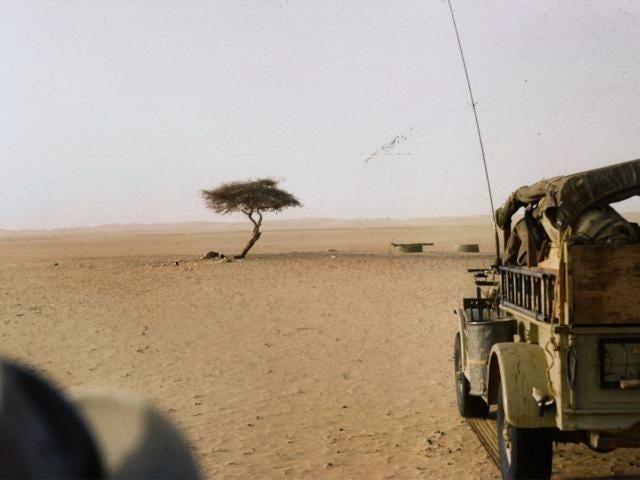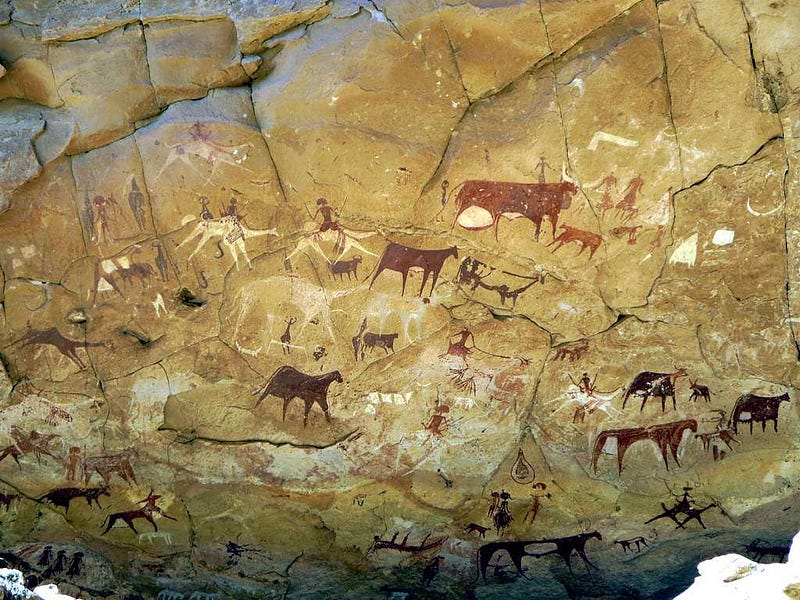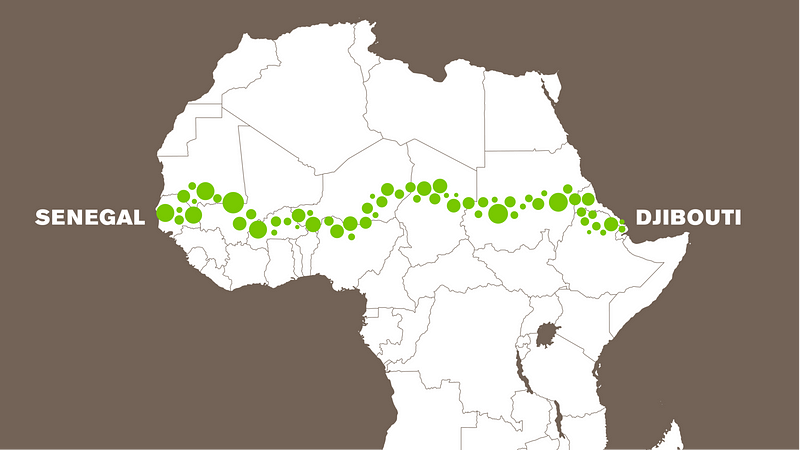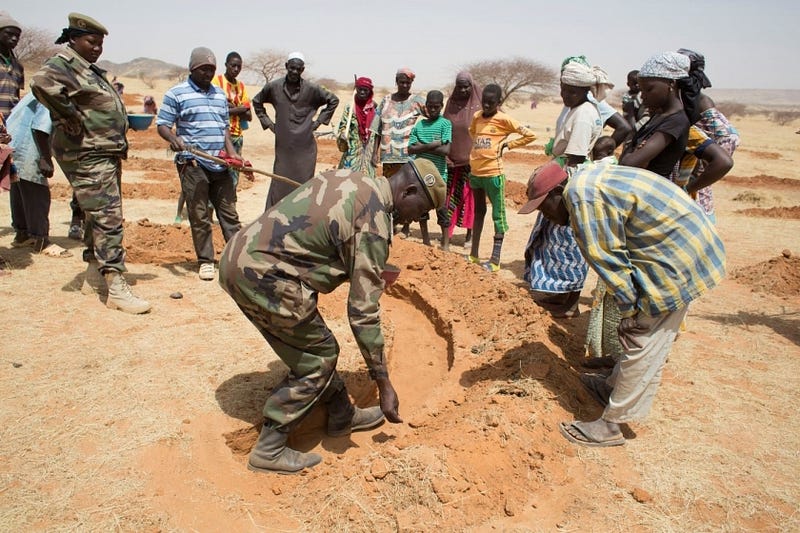Africa's Ambitious Tree Planting Initiative to Combat Desertification
Written on
The Legacy of the Tree of Ténéré
In the arid expanses of Niger, a solitary acacia tree known as the Tree of Ténéré once stood, serving as a critical waypoint for caravans traversing the barren terrain. This tree symbolized a bygone era when the Sahara was vibrant with life, as captured in ancient rock art depicting a variety of wildlife, including hippos and elephants. However, that was over 6,000 years ago.

The Sahara Today
Now, the Sahara holds the title of the world's largest warm desert, stretching from the Atlantic Ocean to the Red Sea—a region larger than the entire United States. This expansion poses a significant threat to the Sahel, a narrow strip of land that offers a glimmer of hope to the communities living at its southern edge. Historically, the Sahel was a thriving agricultural region, integral to several great African civilizations, including the Mali and Songhai Empires. However, environmental degradation and climate change jeopardize the livelihoods of approximately 500 million people residing there.
The consequences of inaction are dire. As climate-related challenges escalate, mass migrations could result in a humanitarian crisis of biblical proportions, reminiscent of past refugee movements. The situation has already forced many farmers in Ethiopia to abandon their lands due to drought.
The Rise of Extremism
Amidst this turmoil, desperation has led to the rise of extremist groups, such as Boko Haram in Nigeria, marking the beginning of a troubling trend of ethnic and religious conflicts in this already volatile area. With echoes of the Syrian Civil War, which was exacerbated by water shortages, the Sahel is perilously close to igniting.
The Vision of the Great Green Wall
In response to these challenges, an ambitious ecological project known as the Great Green Wall has been proposed.

Eleven nations, including Djibouti, Niger, and Nigeria, are joining forces to safeguard their territories from the encroaching Sahara by planting trees. The initiative, originally envisioned by Burkina Faso’s revolutionary leader Thomas Sankara, aimed to create a park of 10 million trees. Although Sankara’s life was cut short by a military coup, his vision laid the groundwork for this monumental effort.
In 2007, the African Union proposed a vast, 4,350-mile green barrier intended to restore 18 million hectares of land and create over 350,000 jobs.
Challenges and Progress
Despite the ambitious goals, progress has been sluggish. By 2020, only 4% of the Great Green Wall project was completed. Ethiopia led the charge by planting 5.5 billion seedlings, while Burkina Faso and Chad lagged significantly behind, having planted just 16.6 million and 1.1 million trees respectively. Alarmingly, estimates suggest that up to 80% of these trees may have died. Chris Reij from the World Resources Institute lamented that if all the trees planted since the 1980s had survived, the region could resemble the Amazon rainforest.
Some critics argue that the Great Green Wall has become a bureaucratic quagmire, wasting resources without tangible results. However, it has galvanized local communities to explore sustainable and cost-effective solutions.
Innovative Local Solutions
Through collaboration with environmental experts, a mosaic of landscapes has emerged, focusing on water conservation and efficient land use. Techniques such as creating deep pits for water filtration and erecting stone barriers to prevent runoff have become commonplace. Farmers are now encouraged to protect naturally occurring trees, integrating them into their agricultural practices.

Chris Reij, who has been involved in environmental work in Africa since 1978, noted a remarkable transformation upon his return. The once barren landscapes have given way to thriving greenery, thanks to the efforts of hundreds of thousands of farmers. By 2004, Niger’s Zinger Valley boasted 50 times more trees than it did in 1975, astonishing observers who could scarcely believe their eyes.
Empowering Communities
Sankara's vision emphasized the importance of empowering local communities in the fight against desertification. Today, his words resonate as communities implement innovative techniques, witnessing the desert's retreat for the first time in millennia.

Follow me on Twitter: @big_picturenews